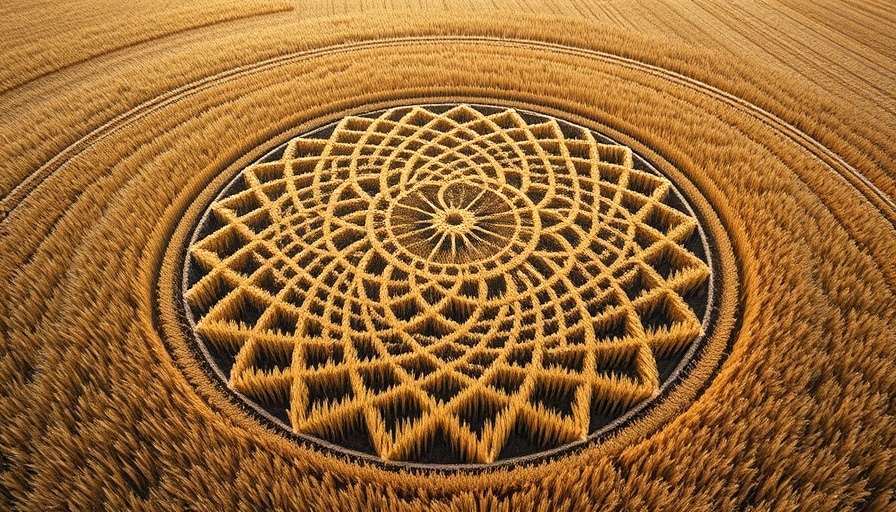
The Truth Behind Crop Circles: Myths and Realities
When you spot a perfectly shaped pattern in a field, your first instinct might lead you to think of UFOs or extraterrestrial life. However, as it turns out, crop circles have a much simpler, more human explanation that often remains obscured by urban myths and the allure of the mysterious.
The Phenomenon's Origins: A Historical Perspective
The modern fascination with crop circles truly began in the 1970s in England. Reports of inexplicable flattening of crops sparked public imagination and fueled theories of alien involvement. During the height of this phenomenon in the 1990s, two men came forward and took responsibility for creating several formations, using simple tools to recreate what many believed were otherworldly designs. This revelation showed that the truth behind crop circles was perhaps less paranormal than many had hoped.
Exploring the Causes: What Really Creates These Patterns?
Despite the lore surrounding crop circles, most formations stem from everyday agricultural practices rather than supernatural phenomena. Here are some primary reasons behind crop circles:
- Cutting for Silage: Farmers often cut specific sections of fields for silage, which can produce patterns that look unusual from above. The varying moisture levels cause some areas to be cut while leaving others standing tall, creating geometric patterns.
- Tile Lines: The installation of perforated pipes beneath fields creates distinct patterns. These tile lines improve drainage and can lead to noticeable differences in crop growth, especially during wet years.
- Irrigation Techniques: Centerpoint irrigation systems, designed to water fields in a circular pattern, lead to distinctive circle formations visible from the air. Thanks to GPS planting now, farmers can easily align their crop layouts to follow these patterns.
- Natural Occurrences: Weather events too play a role. Lightning strikes can fry crops in specific patches, and heavy winds can flatten sections of fields unpredictably, creating patterns that resemble those made by human hands.
- Pranks and Art: In some cases, crop circles are deliberate pranks or creations by artists who use the fields as their canvas, making intricate designs simply for fun or to provoke thought.
Local Perspectives and Insights for Homeowners
As homeowners and potential buyers, particularly in California, understanding the origins of crop circles provides a unique lens on agricultural practices. With an increasing focus on sustainable farming and bioengineering, recognizing that some of the seemingly strange visual effects in our landscape stem from farming techniques could lead to deeper appreciation for the agricultural processes that surround us. This knowledge helps soften the fears that surround what might otherwise be interpreted as unnatural events.
Future Trends: How Agricultural Practices Can Influence Our Landscape
With advancements in technology and innovative agricultural practices, the patterns we see in fields can only become more remarkable yet grounded in real-world farming techniques. Understanding irrigation systems, crop rotation methods, and the importance of soil health may tap into an even broader conversation surrounding sustainability and effective land use—issues that resonate deeply with California homeowners and consumers alike.
Why Understanding Crop Circles Matters: A Call to Awareness
Recognizing the truth behind crop circles fosters a greater understanding of our connection to land and agriculture. It encourages a sense of responsibility among homeowners to engage with agricultural communities and promote practices that are environmentally friendly and sustainable. So next time you see a strange pattern in a field, remember it likely comes from the hands of skilled farmers—not the hands of aliens!
By knowing the truth about crop circles, we empower ourselves to appreciate the science and artistry involved in modern agriculture. Take the opportunity to learn more about local farming practices and how they impact your community.
 Add Row
Add Row  Add
Add 




Write A Comment